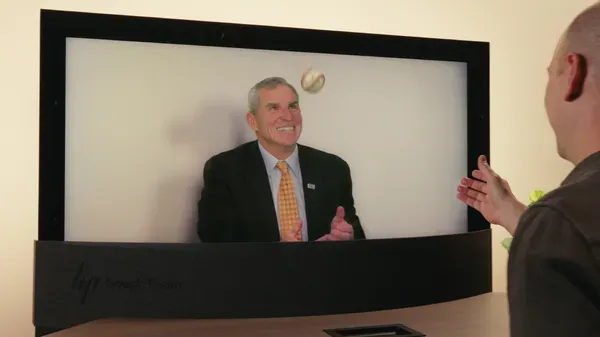Google just announced a partnership with the United Service Organizations (USO) to bring its AI-powered 3D video communication platform, Google Beam, to military families worldwide. Starting next year, deployed service members will access this immersive technology at USO centers to stay connected with loved ones during long deployments, marking Google's most significant push into specialized enterprise applications for the defense community.
Google is making its biggest play yet for the hearts and minds of military families. The tech giant just announced a partnership with the United Service Organizations (USO) to deploy its cutting-edge Google Beam platform at military centers worldwide, giving deployed service members access to AI-powered 3D video calls that promise to make long-distance relationships feel surprisingly intimate.
The timing couldn't be more strategic. As Google faces intensifying competition from Microsoft and Amazon in enterprise AI, this USO partnership opens an entirely new vertical - one where emotional connection matters more than productivity metrics. According to Andrew Nartker, General Manager of Google Beam, the pilot program will roll out to USO centers across the U.S. and internationally starting next year.
What sets Google Beam apart isn't just the 3D video technology - it's the AI that makes remote conversations feel almost physical. The platform uses sophisticated computer vision and machine learning to create what Google calls "shared presence," allowing a deployed parent to read bedtime stories to their child or join birthday celebrations in ways that traditional video calls simply can't match. The technology essentially tricks the brain into believing both parties are in the same room.
This isn't Google's first rodeo with specialized markets. The company has been quietly building enterprise credentials through partnerships with healthcare systems and educational institutions, but the military represents a particularly challenging - and lucrative - frontier. Defense spending on communication technology has surged 40% over the past three years, according to government procurement data, as branches modernize their family support infrastructure.
The USO brings serious credibility to this partnership. For more than 80 years, the organization has been the gold standard for supporting military families, operating centers in 27 countries and serving millions of service members annually. "The USO's mission has supported the well-being of the military community and helped them stay connected to loved ones," the emphasizes, positioning this as mission-critical infrastructure rather than consumer tech.












